HERO-ERA 1: the ‘67 Mustang rebuilt to race from Peking to Paris
A Ford Mustang to tackle the Peking to Paris? Not quite. Andrew Frankel gets to grips with the Prodrive-prepped, rally-ready HERO-ERA 1

Will Broadhead
Think of Prodrive and what comes to mind? I’m guessing it’s Colin McRae in his blue and yellow Subaru leaving his WRC competitors for dust. But maybe I’m wrong. Perhaps its Sébastien Loeb on the Dakar Rally in his Prodrive Hunter T1+ breaking the record for the number of consecutive stage wins, as he did last year. No? An Aston Martin winning its class at Le Mans perhaps, or a Ferrari 550 Maranello.
One vision I’m fairly confident is not swimming before your eyes right now is a first generation Ford Mustang, not least because the original pony car made its worldwide debut in 1964, fully 20 years before David Richards founded his now famous company. Prodrive of course does not trouble itself with ancient relics like this and has never worked its magic on an American car. Until now.
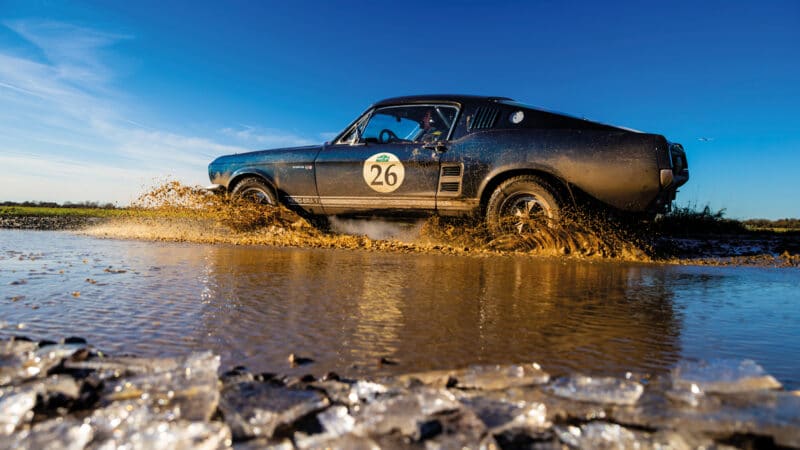
Until recently this was a rusting Mustang before Prodrive took charge of a transformation – to rally spec
Will Broadhead
Welcome, then, the HERO-ERA 1, a car that has neither Prodrive nor Mustang in its name, but is what happens when you ask the former to go to work on the latter with the aim of creating one form of ultimate, long-distance historic rally car. Long distance? In May and June the car will be taking part in the notorious, 8700-mile Peking to Paris rally.
“Prodrive has never worked its magic on an American car”
HERO-ERA is what the Historic Endurance Rally Organisation now calls itself since its merger with the Endurance Rally Association, and it was the idea of its boss Tomas de Vargas Machuca to create a very different kind of long-distance rally car as an alternative to, well, “all those 911s”, as he puts it.

The 1960s and 2020s collide

Note the Prodrive marking
Will Broadhead
Ah yes, the Porsche 911. Back in the 1960s they fought Mustangs on track in club racing all over the US, and now they’ll meet again as historic rally cars on special stages. For its speed, strength and agility, the 911 has become the go-to car for a certain kind of well-heeled customer and I know why. A few years ago I borrowed a HERO-prepped short-wheelbase 911 to do the Rally of the Tests, spent four days hammering it on-road and off all the way from Bournemouth to Chester (if memory serves me correctly) and concluded it was more likely to break me than the other way around.
At first glance, a Mustang might seem a curious weapon to deploy against it. Heavier, with a longer wheelbase and lacking engine-over-rear-axle traction, I’d bet plenty it would struggle to match the times of a Tuthill-developed 911 over a special stage whoever worked on it, even with the brute power of its V8 motor. But of course endurance rallies are about far more than that, and are entered by people with motivations not restricted to merely seeing how fast they can go. Were I to attempt to drive a car across Asia I’d be looking for some less noble but perhaps, in that environment, no less important qualities. A degree of comfort, a bit of space, somewhere to put stuff and the confidence that there’d be nothing else on the event that would look after you better if you rolled it into a ball in the middle of nowhere.
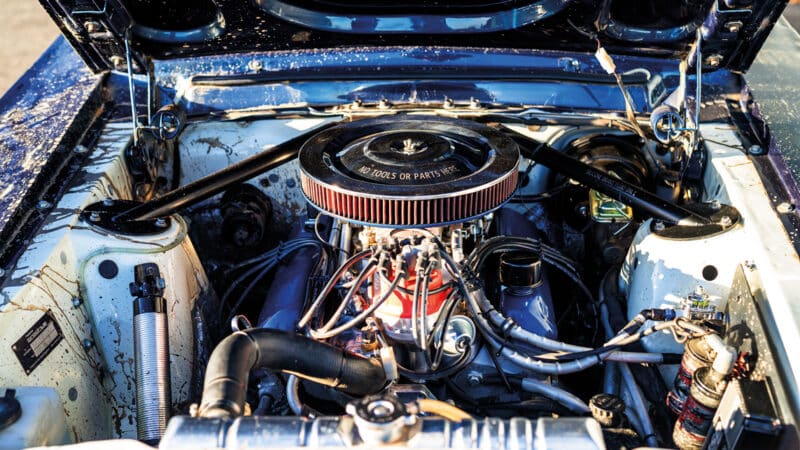
The 5.4-litre V8 engine has been designed to run in extreme conditions
Will Broadhead
It owes its existence to a casual conversation between David Richards and de Vargas Machuca in which the former mentioned that his wife was interested in doing the Peking to Paris rally. But instead of simply renting them a car from HERO’s arrive-and-drive fleet, the latter suggested using a rust bucket 1967 Fastback Mustang as the starting point for a project to create a bespoke and, for now at least, unique desert rally car. To de Vargas Machuca it seemed obvious to commission the builder of some of the world’s best rally cars to make it. To Richards, it was somewhat less so: indeed so far was it from Prodrive’s usual sphere of operations that he almost said no. Happily he relented and entrusted the project to senior engineer Richard Thompson, whose day job is to restore and help customers run Prodrive machinery once its front-line competition days are over.
All by itself the body was in such poor condition it took 600 hours of work to get right and by the time it was painted, assembled and running, over 1500 hours and 15 months had elapsed. And while the result still looks like a Mustang, it’s so different under the skin that they changed its name to avoid upsetting Ford, so the HERO-ERA 1 it is. That ‘1’, by the way, is not a model name, but that car’s number. To whit HERO-ERA 2 is already in build to the same specification and if you want a number of your own, so long as it’s below about 15, you just need to give Tomas a call and hand over a cheque for around £350,000.
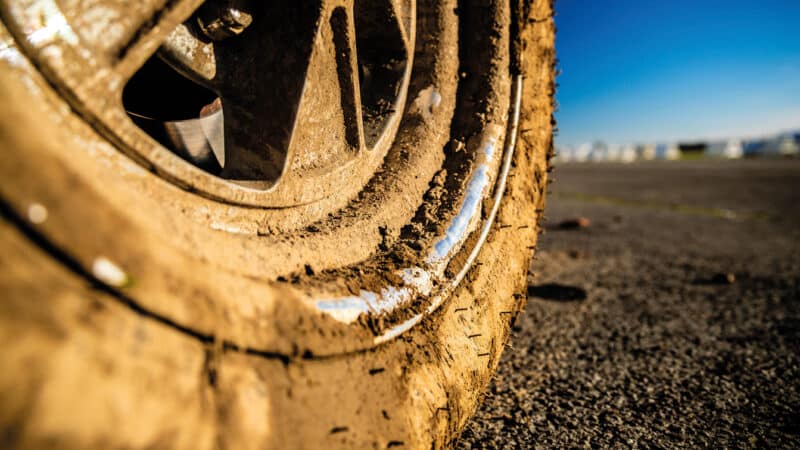
Tough mudder
Will Broadhead
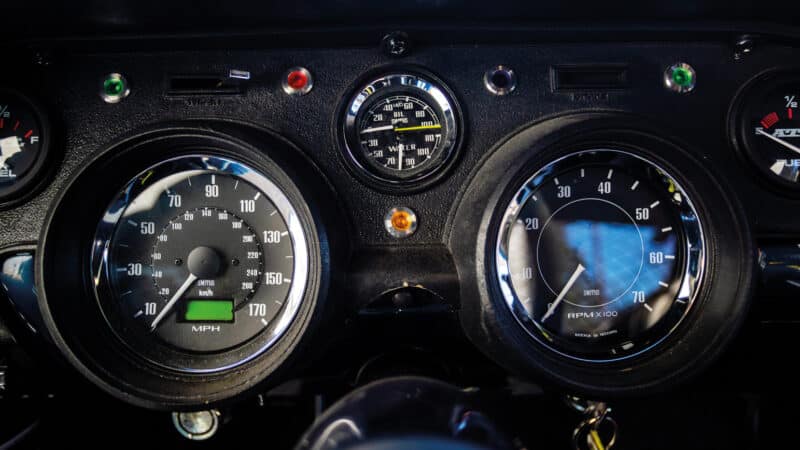
Dials are pleasing nod to the car’s history
Will Broadhead
The car still retains its front-engine, rear-drive configuration. There’s a V8, a manual gearbox and a leaf-sprung live rear axle too. But because it’s a HERO car it needs only conform to HERO regs, which are rather different to those of an Appendix K race car hoping to compete in FIA-sanctioned events.
“It’s tuned for the torque you need and the power you don’t”
For a start this 1967 car has an engine based on the 302cu in V8 that first went into the Mustang in 1968. It uses a Dart block and instead of displacing a little less than the five litres you get when you do the conversion from imperial to metric, this one has been tickled up to 5.4 litres. From that you could extract enormous power – up to 600bhp with the right cam, compression, valves and so on, which would be great for a quick sprint around a race track. Over a jaunt at altitudes as high as 11,000ft and temperatures of over 40°C and below –10°C, on petrol that would make two-star look like nitromethanol? Not great. So it’s tuned for the torque you need and the power you don’t, though 400bhp in a car weighing the same as a Porsche Cayman is plenty.
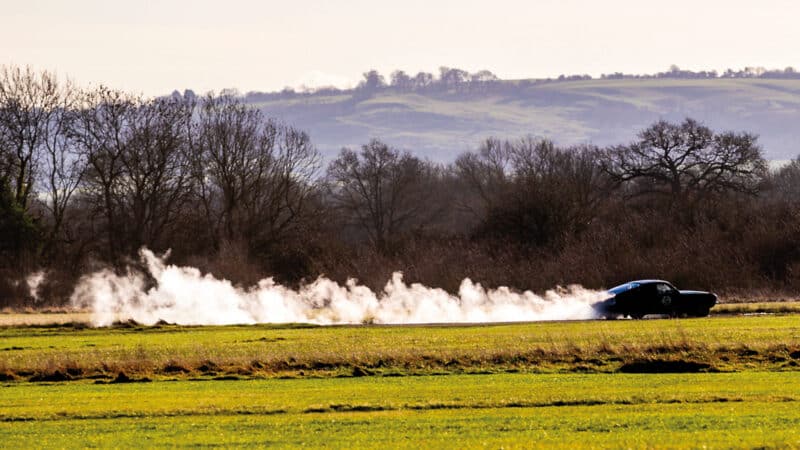
You’re thinking the Peking to Paris would be better in a 911 – and you’d be wrong
Will Broadhead
It comes with full underbody protection, a 70 gallon fuel tank, stiffened suspension, Bilstein dampers (mounted upright at the back because they’d break in original diagonal configuration), uprated brakes and a modern five-speed Tremec manual gearbox. Tyres are all-terrain Michelins originally designed for use on, you guessed it, a van.
The interior gives little impression of just how changed this car is. Yes, there are old-style Smiths instruments which I’d not expected to see, a chunky steering wheel and a traditional shifter with six rather than the usual five positions etched on the white ball, but it is still very much a Mustang cabin.

Could you spend 37 days and 8700 miles in here? It’s surprisingly comfy
Will Broadhead
Climbing in you’re struck at once by, of all things, the comfort of the seat. Being a competition car, your brain just naturally assumes it’s going to be an unyielding shell, but it’s not. It’s padded and nicely cushioned, there to provide the comfort you need over thousands of miles and not the additional support you won’t from a car that’s never going to pull much in the way of g on the loose while wearing van tyres. You’re still well located and secure behind your race harness, but the more important consideration is that you’re going to be spending hour after hour in here, racking up more seat time in a single day than will most club racers in an entire season. Comfort matters.
The burly V8 fires up with that time-honoured woofle. It sounds lovely, as do all bent eights of Motor City origin but it’s not deafeningly loud, I guess because that too could become quite wearing after a day in the saddle. And there are headphones in here too, for easy comms with your passenger which, in my case, is a very trusting Tomas. We’re at Bicester Heritage where HERO-ERA has its base and before us is a three-mile stage, partly Tarmac, but mainly gravel. A 400hp muscle car on a loose surface? In theory there are few closer approximations to heaven on earth of which I am aware, and I’m keen to see if it’s matched by the reality.
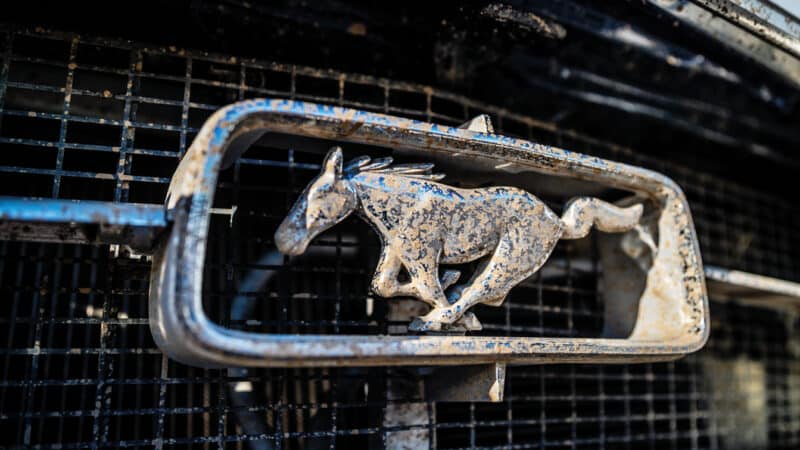
Will Broadhead
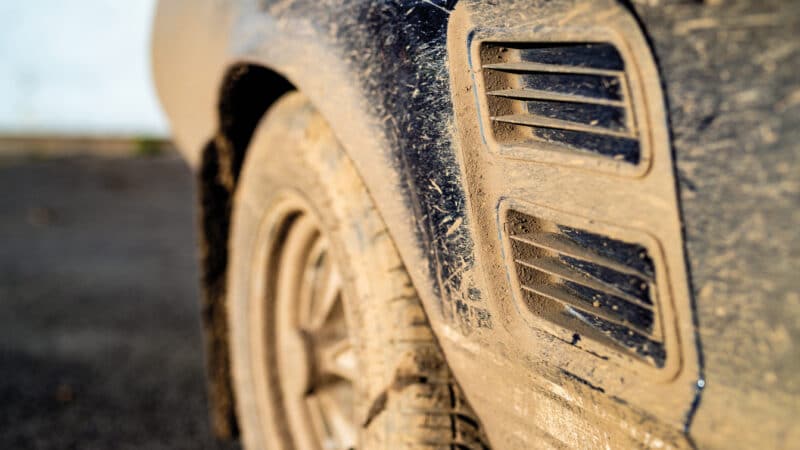
Will Broadhead
The engine pulls beautifully. The clutch is road-car gentle and there’s torque everywhere, a far cry indeed from the spiky racing 289cu motor in the Ford Falcon it is my lucky lot to get to race from time to time. Both breathe through the ubiquitous four-valve Holley carb but in this one it spreads its power from idle to redline.
The gearbox, however, is less good: it feels appropriately heavy and the shift is quite slow, none of which I mind, but it’s less precise than I’d like so you have to guide the shifter with more thought than is ideal, just to make sure there is no danger of wrong slotting.
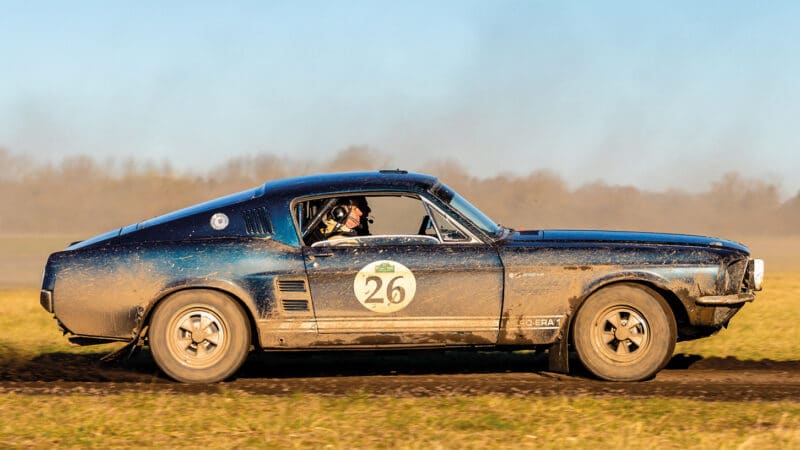
If you like the look of this, Prodrive could have its arm twisted to make more
Will Broadhead
And on Tarmac it feels a little cumbersome, a million miles away from its erstwhile rear-engined rival. The regs mean it has to retain its steering box which means the helm is lower geared than I’d like so there’s quite a lot of arm twirling involved even when you’re not over the limit. On a firm footing, the car’s instinct is to understeer – a condition not helped by those tyres and a tight mechanical limited slip diff, and it has to be broken loose at the back before it will start sliding.
But get it on the rough and, well, it’s like you’ve been teleported into another vehicle altogether, one that has been set up for exactly this environment which, of course, it has.
It is outrageously good fun, fun of a kind where you look across to your passenger and find him grinning as much as you. I’m trying to suppress yelps of laughter because I’m meant to be a professional doing a job, but with Tomas bellowing “Mustang style!” in my headphones as we slither ever more sideways, it’s not easy. What is easy, ludicrously so, is driving this car fast on the loose. So natural and languid is the way it breaks away, adopts and maintains a drift, all those things you usually save for the straights, like changing gear and having a chat, now take place with the car pointing in one direction, its front wheels in the other. You can get to a point, and actually the Falcon would do it in the wet, where you look at your hands and see them applying the opposite lock without even being aware of having issued that instruction. That’s how natural and normal it feels to drive this car this way.

Out in the rough, this 400bhp brute takes with the bumps in its stride. China, here we come…
Will Broadhead
Is it better than a 911? I’ve not driven them back to back but my guess is that there are no wrong answers here. The Porsche is smaller, more reactive and agile and I expect over a single stage or maybe even a short rally would prove to be the one to have. And HERO-ERA has one on their Arrive And Drive fleet. But for something like Peking to Paris, where you’re in the car for 37 days, the space, comfort and accommodating nature of the HERO-ERA 1 might prove compelling. A rally-prepped early 911 keeps you on your toes and despite the reputation, is a fine handling, wildly entertaining and fundamentally faithful thing to have underneath you, but I was pretty worn out after even a few days at the wheel.
There’s something else too: 911s have been fêted as rally cars since Vic Elford won the Monte in 1968; by contrast I’m not aware of anyone having ever rallied a Mustang at a significant level, and the sheer incongruity of turning up in a muscle car among all those Porsches, Minis and MGBs has an appeal of its own. Would that I might have the chance.
